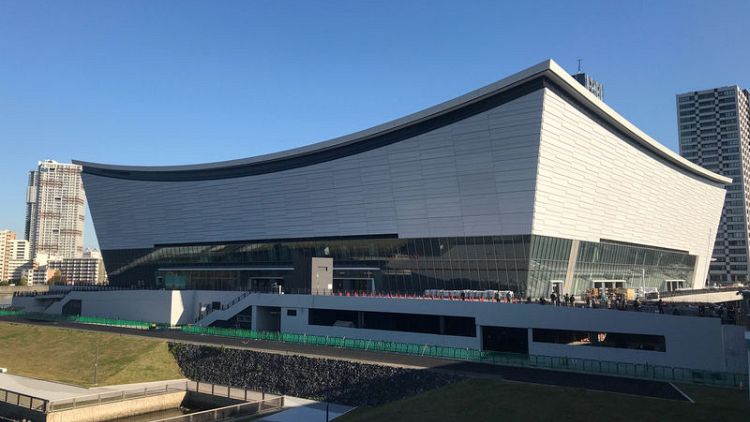By Jack Tarrant
TOKYO (Reuters) - Construction at two Tokyo 2020 venues is nearing completion eight months before the start of the Olympics, as preparations for the Games enter the final stretch on schedule.
The elegant Tokyo Aquatics Centre, which will host swimming and diving at the Games, is 90% complete, according to the Tokyo Metropolitan Government (TMG), and is on schedule to be finished at the end of February.
Likewise, the venue for volleyball and wheelchair basketball is 98% finished with only the painting of the interior floor to be concluded.
All of the venues being built or refurbished for Tokyo 2020 are on schedule, including the centrepiece National Stadium, where construction work finished last week.
"What is left to be done is to finish some of the interior and exterior roof, as well as some office equipment for inside the building," Daishu Tone, venue director for the Aquatics Centre Daishu Tone, said on Thursday.
"Everything will be completed by February next year.”
The Aquatics Centre, built at a cost of 56.7 billion yen ($523 million), will be the last new venue to be completed.
The swimming test event will take place at the Aquatics Centre on April 14-15.
Other than the Olympic Stadium and the Olympic and Paralympic athletes village, TMG is building eight new competition venues for the Games.
Many of the other events are scheduled to be held at pre-existing venues in a bid to keep costs down.
The Games are set to run from July 24 to Aug. 9.
A feature running throughout many of the Tokyo 2020 venues is the use of wood.
Ariake Arena, the volleyball venue, features 880 cubic metres of wood, mainly sourced from Japan, which is the most of any of the sites other than the National Stadium.
After the Tokyo 2020 Games are over, the arena will be used for concerts and other cultural events.
(Reporting by Jack Tarrant; Editing by Emelia Sithole-Matarise)


